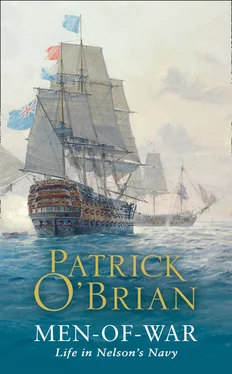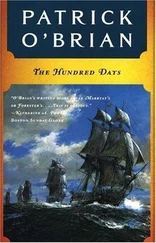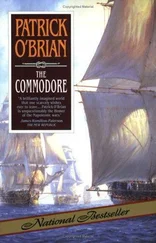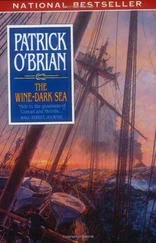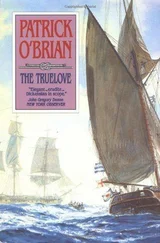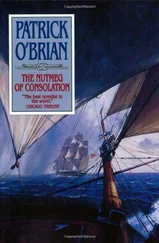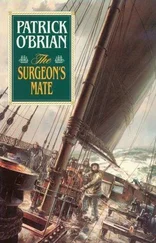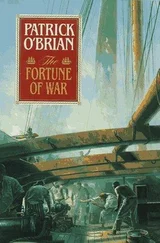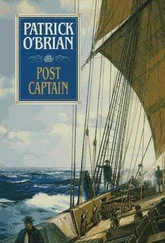MEN-OF-WAR
Patrick O’Brian

Copyright Contents Cover Title Page Copyright Introduction The Ships The Guns The Ship’s Company Life at Sea Songs Index About the Author The Works of Patrick O’Brian About the Publisher
HarperCollins Publishers
1 London Bridge Street
London SE1 9GF
www.harpercollins.co.uk
This eBook edition published 2019
Men-of-War copyright © The Estate of the late Patrick O’Brian CBE 1974
Patrick O’Brian asserts the moral right to be identified as the author of this work
Cover design © HarperCollins Publishers Ltd 2019
Cover Image © Geoff Hunt 2019
A catalogue record for this book is available from the British Library
All rights reserved under International and Pan-American Copyright Conventions. By payment of the required fees, you have been granted the non-exclusive, non-transferable right to access and read the text of this e-book on screen. No part of this text may be reproduced, transmitted, down-loaded, decompiled, reverse engineered, or stored in or introduced into any information storage and retrieval system, in any form or by any means, whether electronic or mechanical, now known or hereinafter invented, without the express written permission of HarperCollins.
Source ISBN: 9780008328320
Ebook Edition © October 2019 ISBN: 9780008356002
Version: 2019-09-30
Contents
Cover
Title Page MEN-OF-WAR Patrick O’Brian
Copyright
Introduction
The Ships
The Guns
The Ship’s Company
Life at Sea
Songs
Index
About the Author
The Works of Patrick O’Brian
About the Publisher
Introduction Contents Cover Title Page MEN-OF-WAR Patrick O’Brian Copyright Introduction The Ships The Guns The Ship’s Company Life at Sea Songs Index About the Author The Works of Patrick O’Brian About the Publisher
Since Britain is an island, it has always needed a navy to keep enemies from coming over the sea to invade it. If there had been an efficient navy in Roman times neither Caesar nor Claudius could have crossed the Channel; if there had been one in 1066, William would never have been called the Conqueror; and if there had not been one in the Armada year the British might be speaking Spanish now. Without the Royal Navy to stop him, Napoleon would certainly have invaded England in 1805 (he had 2,293 vessels in the Channel ports ready to carry 161,215 men and 9,059 horses across), just as Hitler would have done in 1940.
Then again, since England has been a trading nation time out of mind, it has always needed a navy to protect its merchant ships and to attack the enemy’s sea-borne trade. And ever since England became an industrial country as well, unable to produce enough food for its greatly increased population, a navy has been essential to prevent its being starved into surrender.
A navy has always been necessary; but it was not for many centuries after King Alfred’s time that the Royal Navy as we know it, a permanent service quite separate from the mercantile marine, came into being. The kings generally had some ships of their own, but in war most of the country’s naval force was made up of merchantmen, some hired and some provided by such towns as the Cinque Ports; and once the war was over they went home: they were not real men-of-war, in the sense of being ships specially built and armed for fighting alone. ‘Man’ is an odd word for a ship, since sailors call all vessels ‘she’, but ‘man-of-war’ came into the language about 1450, and it has stayed, together with East-Indiaman for a ship going to India or Guineaman for one sailing to West Africa, and many more. Henry VIII had about fifty men-of-war, and it was he who set up the Admiralty and Navy Board to look after them. Queen Elizabeth I had fewer – of the 197 English ships that sailed to fight the Spanish Armada only 34 belonged to her. Charles I had 42, but in the wars of the Commonwealth the number grew, so that when King Charles II came into his own again he had 154 vessels of all kinds. It was at this time that the Navy began to take on its modern shape: formerly the King had had to keep his ships out of his own pocket, but now the nation paid for them; and now the officers, instead of being sent away when there was no need for them, were kept on half-pay – they could make a career of the Navy rather than join from time to time. This did not apply to the men, however: they came aboard, or were brought aboard by the press-gang, every time there was a war; and when it was over they went back to their former ways of making a living. By the end of Charles II’s reign the Royal Navy had 173 vessels, and because of the labours of Samuel Pepys, the Secretary of the Admiralty, and of the Duke of York, who was Lord High Admiral, it was a fairly efficient body.
All through the eighteenth century the Royal Navy grew: in 1714 there were 247 ships amounting to 167,219 tons; in 1760 412 of 321,104 tons; and in 1793, although the number had dropped by one, the tonnage amounted to 402,555. This was at the beginning of the great war with France, in which the Royal Navy reached the height of its glory, and the numbers increased rapidly; by the time Napoleon had been dealt with, Britain had no less than 776 vessels, counting all she had taken from the French, Spaniards, Danes and Dutch; and altogether they came to 724,810 tons. At this time, at its greatest expansion, the Royal Navy needed 113,000 seamen and 31,400 Royal Marines, and a hard task it was to find them, as we shall see when we come to the press-gang.
The Ships Contents Cover Title Page MEN-OF-WAR Patrick O’Brian Copyright Introduction The Ships The Guns The Ship’s Company Life at Sea Songs Index About the Author The Works of Patrick O’Brian About the Publisher
The vessels that made up the early Navy were of all shapes and sizes, from Henry VIII’s Henry Grace à Dieu of 1,000 tons down to row-barges, passing by cogs, carracks, and ballingers, shallops and pinnaces; but by the seventeenth century the pattern that lasted up until the coming of steam was clear, and by the eighteenth it was firmly established. The ships of the Royal Navy were divided into six rates as early as Charles I, and this is how they stood in 1793:
| first rate |
|
100–112 guns, 841 men (including officers, seamen, boys and servants) |
| second rate |
|
90–98 guns, 743 men |
| third rate |
|
64, 74 and 80 guns, 494, about 620, and 724 men |
| fourth rate |
|
50 guns, 345 men (this rate also included 60-gun ships, but there was none in 1793) |
| fifth rate |
|
32, 36, 38 and 44 guns, 217–297 men |
| sixth rate |
|
20, 24 and 28 guns, 138, 158 and 198 men. |
All these ships, from 20 to 112 guns, were commanded by post-captains.
Vessels that carried less than 20 guns – that is to say, all the sloops, brigs, bomb-ketches, fire-ships, cutters and so on – were not rated, and their captains were masters and commanders in the case of sloops, and lieutenants in the rest. (‘Captains’ in the sense of commanding officers, not of permanent rank: if a midshipman was sent away in charge of a prize, he was her captain so long as he was in command.)
The ships that carried 60 guns and more were called ships of the line, because it was they alone that could stand in the line of battle when two fleets came into action. The first and second rates were three-deckers (that is to say they had three whole decks of guns, apart from those on the quarterdeck and forecastle); the third and fourth rates and the 44s were two-deckers; and the rest one-deckers – they were frigates from 38 guns down to 26, and post-ships when they carried 24 or 20. The word ‘frigate’ was used in the seventeenth century without any very precise meaning, but by this time it had long been understood to mean a ship that carried her main armament on one deck and that was built for speed: the frigates were the eyes of the fleet, and they were also excellent cruisers, capital for independent action.
Читать дальше
